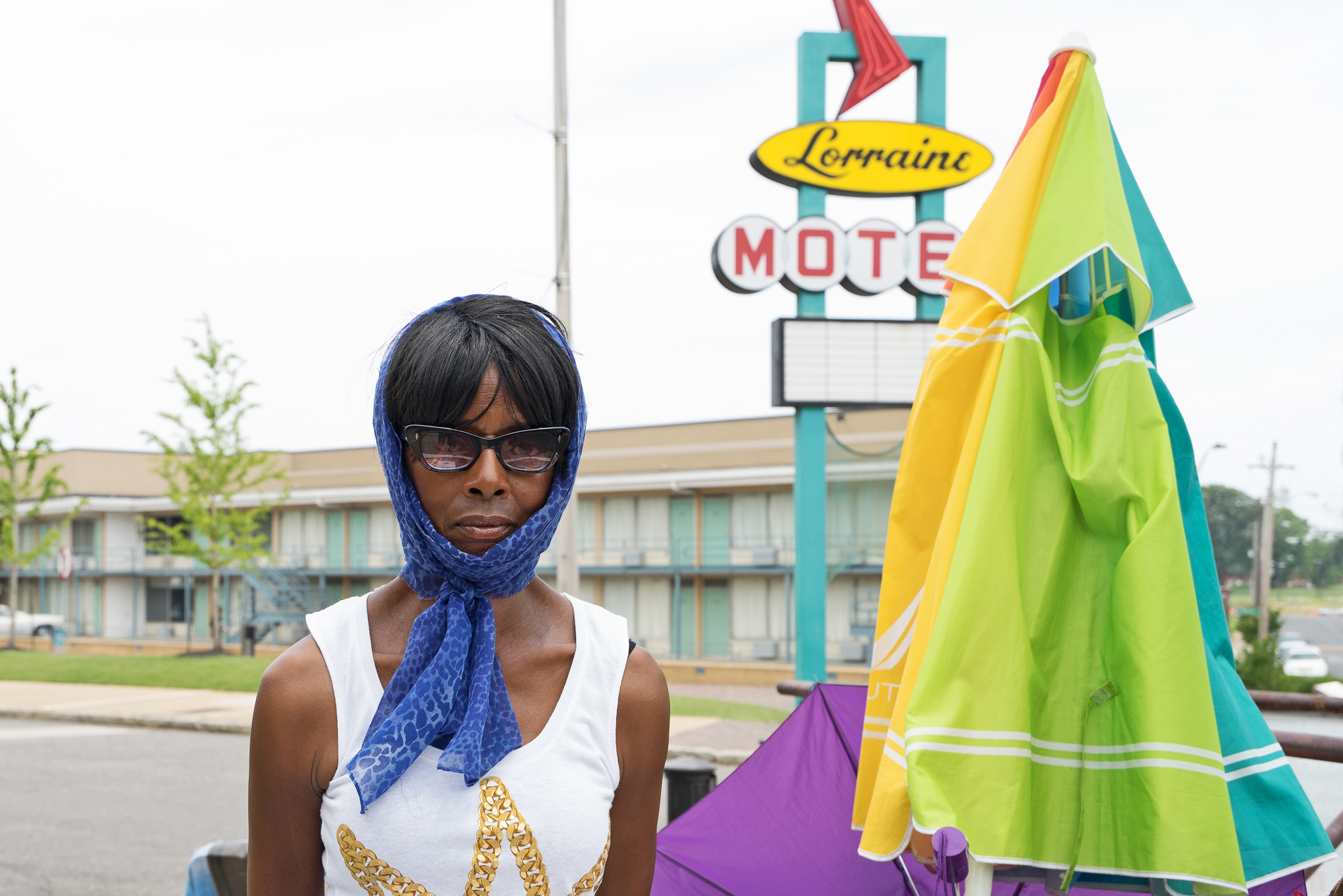The following is just a small excerpt from the interview:
Matthias Ries:
What are your feelings about installing a museum on someones place of death [editors note: the Lorraine Motel, Where Dr. Martin Luther King was assassinated, which is now the National Civil Rights Museum] in comparison to the place of someones place of working and living [editors note: the Martin Luther King, Jr. National Historic Site close to Atlanta, Georgia].
Jacqueline Smith:
Well I agree with what Miss King has done. She has set up a proper facility there for Dr. King. The center there, that was trying to and seeking to bring up social change. I agree with the King Center in Atlanta. And I felt that that’s sufficient. There’s only one Graceland, we only have one White House here, why do we got to have all these museums [editors not: about Dr. Martin Luther King] throughout the United States, you see. It’s not done for nobody else. What about Mother Theresa? Where is her 50 million dollar monument at? The founder of St. Jude Children’s Research Hospital, Danny Thomas, where is his 50 Million Dollar monument at? Where are his statues? There’s no such thing!
Matthias Ries:
So do you think it is inappropriate to install a museum like this on a place of assassination?
Jacqueline Smith:
This is very inappropriate, because Dr. King came her [editors note: to Memphis] to address the issues of the poor people. He was on the verge of leading the Poor Peoples March on Washington. The Civil Rights Movement had ended, but he realized that the people didn’t have money, so that was his last crusade; the Poor People’s Campaign. And so being that, being that’s what he was doing, we should continue to do, because people today are struggling. They are living on the street, no jobs, minimal wage jobs, that’s what America offers. Jobs that you can’t even support your families out of. And then you got a legacy that died and bleed on the balcony at the Lorraine Motel. He represented the underpaid people and the poor and his legacy didn’t do anything to help the poor today?! That doesn’t make any sense to me. We’ve been alienated and polarized and kept away from this history. We can’t live in the area. We are not getting any share of the money that the history is generating. It’s generating a lot of money down here; or It’s a possibility that it might generate a lot of money one day. But as I stand today, we’re not getting any money. We have not been made better by the Civil Rights Museum being in the Lorraine Motel. The community was not uplifted. The museum sat back and watched the gentrification of the neighborhood, because the museum opened in 1988 – well no, the Lorraine Motel closed in 1988 and the museum opened in 1991 and I was forced out of the Motel in 1988. And I vowed to remain here on the sidewalk and that’s how I’ve come to be here for 27 years. In the year 2001, Mulberry street was gentrified, that’s when basically the people on Mulberry street were forced out this place. Do you think Dr. King would support people being displaced?! He didn’t come her for that to happening to the people along Mulberry street to be mistreated like that. He didn’t come here for us to be displaced and our land taken away from us.
Matthias Ries:
In the terms of archive, what do you think about objects being kept as a memorabilia, like the Cadillacs [editors note: that have been placed in front of the balcony, where Dr. Martin Luther King was assassinated]. Do you think that’s just decoration and should not happen, as people then connect the legacy of a person to just a couple of objects?
Jacqueline Smith:
Well, the Civil Rights Movement didn’t occur in Memphis. He came here on the verge for leading the Poor People’s Campaign. So I think they got very little authentic archives, archived pieces over there, including the cars you just mentioned. Those are replicas of the cars that where there, they are not the original cars. King didn’t own a Cadillac car. And so the museum is set up the same way. There was no civil right event here in Memphis, so what are they showing? They went and spent a lot of money, creating expensive replicas of events that occurred during the Civil Rights Movement. The Woolworth Lunch counter, the Birmingham Jail cell and also the room that Dr. King last lived in was recreated by the Civil Rights Museum. Miss King had the furniture moved out of the last room Dr. King slept, in room 306. And so what they got in there now is a recreation of the room, it’s not original. It’s just another recreation and so I don’t see no archival monuments there.
Matthias Ries:
Do you think it’s necessary to have have original pieces?
Jacqueline Smith:
Absolutely. Why would you want to waste money creating replicas. I mean that’s just replicas, it’s not genuine. I don’t wanna see no replica of a car. If King didn’t ride in a car, what would I wanna see a replica of a car for? I don’t wanna see no replicas, I wanna see the real deal. And if you want to see, than just go to Atlanta, where his cars are, where he was born in, his home is there, you see. When you go to Graceland you don’t get no replicas of no cars, the cars you see are original. But they don’t have Graceland all over the Untied States either. They got one Graceland. So we have the center in Atlanta, that was created by Miss King and so that’s where your archival items are, not here. This is just another Disneyland that they have set up to make money of the blood of Dr. King. That’s all it is. It’s motivated by the fact now they see that black history has become one of the major industries in the United States and they are cashing in on it. It’s not that they wanna… there motivation is profiteering of the death of Dr. King; profiteering of his death and controlling the history. They’ve alienated the poor people, alienated African Americans from the opportunity of making any money here in the area, as there are no African American businesses right here in the immediate area. We only got one, it’s way on the other street away from the Civil Rights Museum over there in this area. […]
Interview with Jacqueline Smith
18th of June 2015
| subscribe to the RSS feed
Jacqueline Smith was one of the last long term residents of the Lorraine Motel, which became infamous as the site of the murder of Dr. Martin Luther King. In the course of transforming the Lorraine Motel into a memorial site, all residents were forced to move out. Besides the memory of the murder, Jaqueline Smith is protesting against her removal by sitting next to the Lorraine Motel memorial every day for the past 26 years, and thus becoming a part of the intrinsic memory of this site.

